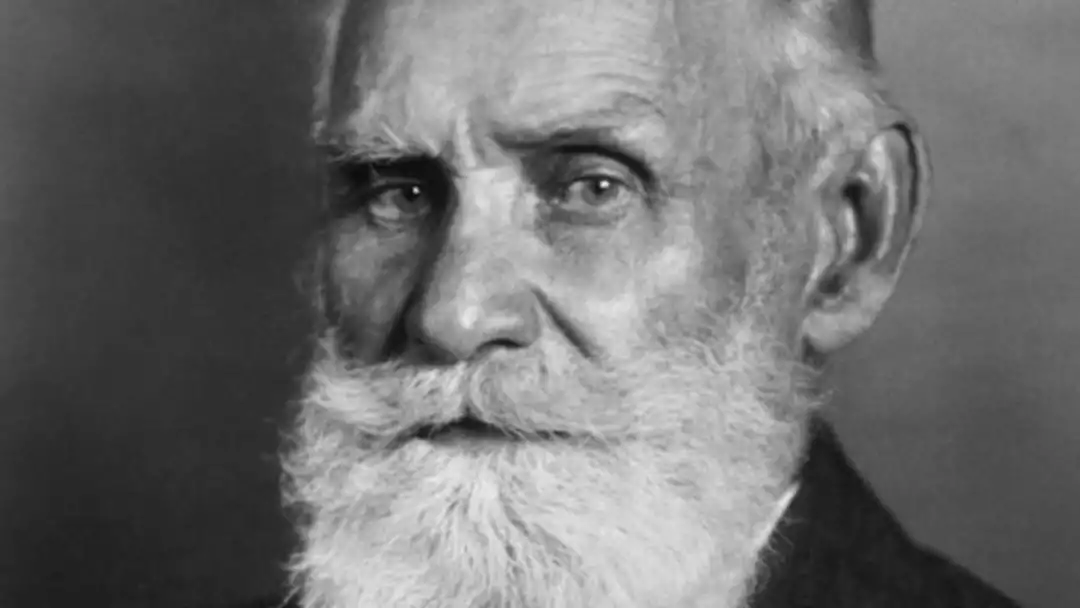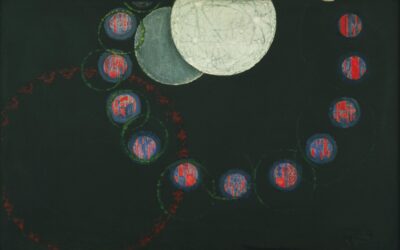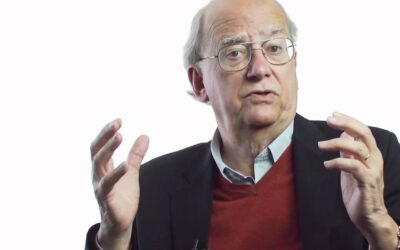Who was Ivan Pavlov?

Ivan Petrovich Pavlov (1849-1936) was a Russian physiologist and psychologist who is widely considered one of the most influential figures in the history of psychology. He is best known for his groundbreaking work on classical conditioning, a learning process in which a neutral stimulus becomes associated with a biologically significant stimulus to elicit a conditioned response. Pavlov’s meticulous research on the digestive system of dogs led to profound insights into the nature of learning and behavior that continue to shape our understanding of psychology today. This essay provides an in-depth exploration of Pavlov’s life, key experiments, theoretical contributions, and enduring legacy in the field.
Early Life and Education
Ivan Pavlov was born on September 14, 1849, in Ryazan, a small village in central Russia. His father was a village priest, and young Ivan initially followed in his footsteps, enrolling in a theological seminary at the age of 15. However, he soon became disillusioned with religion and turned his interests toward the natural sciences. In 1870, he transferred to the University of Saint Petersburg to study chemistry and physiology.
At the university, Pavlov came under the mentorship of Ilya Cyon, a renowned physiologist who introduced him to the study of the circulatory system. Pavlov excelled in his studies and received his doctorate in 1879 for his research on the regulation of blood pressure. He then went to Germany to work with the esteemed physiologist Rudolf Heidenhain, who further honed Pavlov’s experimental skills and scientific rigor.
Research on Digestive Physiology
Upon returning to Russia, Pavlov secured a position at the Military Medical Academy in St. Petersburg, where he began his seminal research on the digestive system. At the time, little was known about the mechanisms of digestion, and Pavlov set out to unravel its mysteries through meticulous experimentation.
Pavlov developed a groundbreaking surgical technique that allowed him to study the digestive processes of living animals in real-time. He created a small pouch, or “miniature stomach,” that was separated from the main stomach but still connected to the digestive system. This enabled him to collect pure digestive secretions and precisely measure their quantity and composition in response to various stimuli.
Through his experiments, Pavlov discovered that the digestive system was not solely a mechanical process, as was previously believed, but was also regulated by the nervous system. He found that the sight, smell, or even the thought of food could trigger the secretion of digestive juices in a dog’s stomach, even when no food was present. This phenomenon, which he termed “psychic secretion,” provided the first evidence of the mind-body connection in digestion.
Pavlov’s work on digestive physiology earned him international acclaim and the Nobel Prize in Physiology or Medicine in 1904. However, his most famous and impactful research was yet to come, as he began to notice a curious phenomenon in his experimental dogs that would lead him to his groundbreaking theory of classical conditioning.
Classical Conditioning
4.1 Pavlov’s Dogs
During his digestive experiments, Pavlov observed that his dogs would start salivating not only at the sight of food but also at the mere presence of the lab assistants who typically fed them. This led him to wonder about the nature of these learned associations and to design a series of experiments to investigate them systematically.
In his most famous experiment, Pavlov presented a dog with a neutral stimulus (such as the sound of a metronome) followed by food. Initially, the dog salivated only when the food was presented. However, after repeated pairings of the sound and the food, the dog began to salivate at the sound alone, even when no food was given. Pavlov realized that the dog had learned to associate the neutral stimulus (the sound) with the biologically significant stimulus (the food), and this association was triggering the reflexive response of salivation.
4.2 Key Components of Classical Conditioning
Pavlov’s experiments revealed several key components of the classical conditioning process:
Unconditioned Stimulus (US): A stimulus that naturally and automatically triggers a response, such as food triggering salivation.
Unconditioned Response (UR): The unlearned, automatic response to the US, such as salivation in response to food.
Neutral Stimulus (NS): A stimulus that does not initially trigger the UR, such as the sound of a metronome.
Conditioned Stimulus (CS): The previously neutral stimulus that, through repeated pairings with the US, comes to elicit the conditioned response. In Pavlov’s experiments, the sound of the metronome became the CS.
Conditioned Response (CR): The learned response to the CS that mimics the UR. In the case of Pavlov’s dogs, salivation in response to the sound alone was the CR.
Through further experimentation, Pavlov discovered several additional factors that influenced the strength and persistence of conditioned responses:
Acquisition: The initial stage of learning in which the association between the CS and US is formed through repeated pairings.
Extinction: The gradual weakening and disappearance of the CR when the CS is repeatedly presented without the US.
Spontaneous Recovery: The reappearance of an extinguished CR after a period of rest, demonstrating that the original learning is not entirely erased.
Generalization: The tendency for a CR to be elicited by stimuli that are similar to the original CS.
Discrimination: The ability to differentiate between similar stimuli and respond only to the CS.
Higher-Order Conditioning: The process by which a previously conditioned CS can serve as a US for a new CS, creating a chain of learned associations.
4.3 Implications and Applications
Pavlov’s discovery of classical conditioning had profound implications for our understanding of learning and behavior. It demonstrated that learning could occur through automatic, unconscious associations rather than solely through conscious, voluntary actions. This insight paved the way for the behaviorist school of psychology, which emphasized the study of observable behavior and the environmental factors that shape it.
Classical conditioning has found numerous applications in various fields, including:
Behavioral therapy: Techniques such as systematic desensitization and aversion therapy use the principles of classical conditioning to treat phobias, anxiety disorders, and substance abuse.
Advertising and marketing: Advertisers often pair their products with positive stimuli (such as appealing imagery or celebrity endorsements) to create favorable associations in consumers’ minds.
Animal training: Trainers use classical conditioning to teach animals new behaviors and responses, from training dogs to assisting people with disabilities to teaching dolphins to perform in shows.
Education: Teachers can use classical conditioning principles to create positive associations with learning and to manage classroom behavior.
Theoretical Contributions
5.1 Types and Temperaments
In addition to his work on conditioning, Pavlov made significant contributions to the study of individual differences in behavior. He proposed that differences in temperament and personality could be attributed to the balance of excitatory and inhibitory processes in the nervous system.
Pavlov identified four basic types of nervous system based on the strength and equilibrium of these processes:
Strong excitatory: Characterized by quick reactions, high energy, and a tendency toward impulsivity. Strong inhibitory: Characterized by emotional stability, self-control, and the ability to delay gratification. Balanced: Characterized by an optimal balance of excitation and inhibition, leading to adaptability and resilience. Weak: Characterized by low energy, high sensitivity, and a tendency toward anxiousness and instability. Pavlov believed that these nervous system types were innate and could predict an individual’s response to environmental stimuli and stressors. His typology laid the groundwork for later theories of personality and continues to influence research on individual differences today.
5.2 Transmarginal Inhibition and Experimental
Neurosis Pavlov also investigated the effects of extreme stress on the nervous system and behavior. In a series of experiments, he subjected dogs to increasingly intense and unpredictable stimuli, such as electric shocks or loud noises. He observed that, beyond a certain threshold of intensity, the dogs’ behavior would become erratic and disordered, marked by a breakdown of learned responses and the emergence of neurotic symptoms such as restlessness, aggression, or catatonia.
Pavlov termed this phenomenon “transmarginal inhibition,” referring to the protective shutdown of the nervous system when stimulation exceeds a critical limit. He believed that this process could explain the development of neurotic disorders in humans, as chronic stress could lead to a similar breakdown of adaptive functioning.
Pavlov’s concept of experimental neurosis provided a model for studying the biological basis of mental disorders and paved the way for later research on the effects of stress on the brain and behavior. His work also influenced the development of behavioral therapies for anxiety and stress-related disorders, which aim to restore the balance of excitatory and inhibitory processes in the nervous system.
Legacy and Influence
6.1 Impact on Psychology
Pavlov’s research had a monumental impact on the field of psychology and laid the foundation for the rise of behaviorism in the early 20th century. His work challenged the prevailing notion of psychology as the study of conscious experience and shifted the focus to observable behavior and the environmental factors that shape it.
Pavlov’s ideas inspired a generation of psychologists, including John B. Watson and B.F. Skinner, who further developed the principles of classical and operant conditioning and applied them to a wide range of psychological phenomena. The behaviorist approach dominated psychology for much of the 20th century and continues to influence research and practice in areas such as learning theory, behavior modification, and cognitive-behavioral therapy.
6.2 Pavlov’s Influence on Other Fields
Beyond psychology, Pavlov’s work had far-reaching implications for other scientific disciplines and for society as a whole. His research on the digestive system advanced the field of physiology and laid the groundwork for modern gastroenterology. His experimental techniques, including the use of surgical procedures and precise measurement of physiological responses, set a new standard for rigor and control in scientific research.
Pavlov’s ideas also had a significant impact on education, child-rearing, and animal training. His emphasis on the role of environment in shaping behavior led to new approaches to learning and development that stressed the importance of positive reinforcement and the avoidance of punishment. Pavlov’s work also influenced the development of behavioral engineering and the application of conditioning principles to shape human and animal behavior in various settings, from the classroom to the factory floor.
6.3 Pavlov’s Legacy in Neuroscience
Pavlov’s research also made significant contributions to the field of neuroscience and our understanding of the brain mechanisms underlying learning and behavior. His work on the conditioned reflex provided a model for studying the neural basis of associative learning and memory.
Pavlov’s concept of the “dynamic stereotype,” referring to the stable patterns of neural activity that underlie conditioned responses, anticipated later research on the role of synaptic plasticity in learning and memory. His studies of the effects of brain lesions on conditioned responses also paved the way for modern research on the neural circuitry of emotion and motivation.
Today, Pavlov’s legacy continues to inspire neuroscientists who are using advanced techniques, such as optogenetics and brain imaging, to unravel the neural mechanisms of learning, memory, and behavior. His pioneering work laid the foundation for our current understanding of how experience shapes the brain and how the brain gives rise to the complexities of behavior and cognition.
Ivan Pavlov’s groundbreaking research on classical conditioning and the physiology of digestion left an indelible mark on the field of psychology and on our understanding of learning and behavior. His rigorous experimental approach, innovative surgical techniques, and keen observation skills set a new standard for scientific inquiry and paved the way for the rise of behaviorism and the study of observable behavior.
Pavlov’s discovery of the conditioned reflex demonstrated that learning could occur through automatic, unconscious associations and that the environment plays a crucial role in shaping behavior. His work on individual differences in temperament and the effects of stress on the nervous system also laid the foundation for later research on personality, motivation, and mental health.
Beyond his scientific contributions, Pavlov’s ideas had far-reaching implications for society, influencing approaches to education, child-rearing, animal training, and behavioral engineering. His emphasis on the power of positive reinforcement and the avoidance of punishment continues to shape best practices in these fields today.
Pavlov’s legacy also extends to the field of neuroscience, where his ideas about the neural basis of learning and memory continue to inspire cutting-edge research. His concept of the dynamic stereotype and his studies of the effects of brain lesions on behavior anticipated modern research on synaptic plasticity and the neural circuitry of emotion and motivation.
In conclusion, Ivan Pavlov’s pioneering research on classical conditioning and the physiology of digestion left an enduring mark on psychology, neuroscience, and society as a whole. His rigorous experimental approach, keen observation skills, and theoretical insights continue to inspire and guide research on learning, behavior, and the brain. Pavlov’s legacy reminds us of the power of scientific inquiry to unravel the mysteries of the mind and to shed light on the complex interplay of biology, environment, and experience in shaping who we are.
Pavlov’s Influence on Contemporary Psychology
8.1 Behaviorism and Learning Theory Pavlov’s work on classical conditioning laid the foundation for the behaviorist movement in psychology, which dominated the field for much of the 20th century. Behaviorists, such as John B. Watson and B.F. Skinner, expanded on Pavlov’s ideas and applied the principles of conditioning to explain a wide range of human and animal behavior.
Watson, who is often credited with founding behaviorism, argued that psychology should focus solely on observable behavior and reject the study of consciousness and mental processes. He conducted famous experiments on conditioned emotional responses, such as the Little Albert experiment, which demonstrated how fears could be learned through classical conditioning.
Skinner, another prominent behaviorist, developed the concept of operant conditioning, which emphasized the role of consequences in shaping voluntary behavior. While operant conditioning is distinct from classical conditioning, it shares the basic premise that behavior is determined by environmental factors rather than internal mental states.
The behaviorist approach had a profound influence on learning theory and educational practices throughout the 20th century. Principles of reinforcement, punishment, and shaping were widely applied in the classroom and in behavior modification programs. While the cognitive revolution of the 1960s and 1970s challenged the behaviorist emphasis on observable behavior, the basic principles of conditioning continue to inform our understanding of learning and behavior change.
8.2 Pavlovian Conditioning in Clinical Psychology
Pavlov’s work on classical conditioning has also had significant implications for the field of clinical psychology and the treatment of mental health disorders. The principles of Pavlovian conditioning have been applied to explain the development and maintenance of various emotional and behavioral disorders, such as phobias, anxiety disorders, and substance abuse.
For example, the concept of conditioned fear responses has been used to understand the etiology of phobias and post-traumatic stress disorder (PTSD). Just as Pavlov’s dogs learned to fear a neutral stimulus that was paired with an aversive stimulus, humans can develop irrational fears and anxiety responses to stimuli that are associated with traumatic experiences.
The principles of Pavlovian conditioning have also informed the development of exposure-based therapies for anxiety disorders and phobias. These therapies involve gradually exposing individuals to feared stimuli in a safe and controlled environment, with the goal of extinguishing the conditioned fear response. By repeatedly presenting the feared stimulus without the aversive outcome, the individual learns that the stimulus is safe and the anxiety response diminishes over time.
Pavlovian conditioning has also been applied to the field of addiction and substance abuse. The cue-reactivity theory of addiction posits that drug-related stimuli (such as the sight of drug paraphernalia or the context in which drug use occurs) can become conditioned stimuli that elicit cravings and motivate drug-seeking behavior. This theory has informed the development of cue exposure therapies, which aim to extinguish conditioned drug responses by repeatedly exposing individuals to drug-related cues in the absence of drug use.
8.3 Pavlov’s Influence on Cognitive Psychology
While Pavlov is primarily associated with the behaviorist tradition, his work has also had a significant influence on the field of cognitive psychology. Cognitive psychologists, who study mental processes such as perception, attention, memory, and decision-making, have built on Pavlov’s ideas about the role of associations in learning and behavior.
For example, the concept of associative learning has been applied to the study of memory and the formation of knowledge structures. Just as Pavlov’s dogs learned to associate a neutral stimulus with a biologically significant event, humans learn to associate new information with existing knowledge through the process of encoding and retrieval. The strength and durability of these associations depend on factors such as attention, repetition, and the meaningfulness of the material.
Pavlov’s work on generalization and discrimination has also influenced research on categorization and concept formation. Cognitive psychologists have studied how humans learn to group stimuli into categories based on their shared features and to discriminate between similar stimuli based on their distinctive features. These processes are thought to underlie our ability to organize and make sense of the complex world around us.
Finally, Pavlov’s research on the neural mechanisms of learning and behavior has inspired cognitive neuroscientists who study the brain bases of cognition. Using advanced techniques such as brain imaging and single-cell recording, researchers have begun to unravel the neural circuits and computations that underlie associative learning, memory formation, and decision-making. While the field of cognitive neuroscience has moved beyond the simple stimulus-response models of Pavlovian conditioning, Pavlov’s pioneering work laid the foundation for our current understanding of the brain mechanisms of learning and behavior.
Criticisms and Limitations of Pavlov’s Work
9.1 Overemphasis on Reflexive Behavior
One of the main criticisms of Pavlov’s work is that it overemphasized the role of reflexive, automatic behavior and neglected the importance of voluntary, goal-directed actions. Pavlov’s experiments focused primarily on conditioned reflexes, such as salivation and eye-blinking, which are relatively simple and stereotyped responses. However, much of human behavior is more complex and flexible, involving the pursuit of goals, the formation of intentions, and the use of strategies and plans.
Critics argue that Pavlov’s emphasis on reflexive behavior led to an oversimplified view of learning and behavior that neglected the role of cognitive processes such as attention, memory, and problem-solving. While Pavlov acknowledged the existence of “higher nervous activity” and the influence of the cerebral cortex on behavior, his work focused primarily on the subcortical mechanisms of conditioning.
9.2 Limited Generalizability to Human Behavior
Another limitation of Pavlov’s work is that it was based primarily on animal studies and may not fully generalize to human behavior. While the basic principles of classical conditioning have been demonstrated in humans, there are important differences between human and animal learning that limit the direct application of Pavlov’s findings.
For example, humans have more complex cognitive abilities and are capable of higher-order conditioning, in which a conditioned stimulus can become associated with a second conditioned stimulus. Humans are also more likely to be influenced by verbal instructions, social cues, and cultural factors that are absent in animal studies.
Moreover, the experimental conditions used in Pavlov’s studies, such as the surgical preparation of dogs and the precise control of stimuli, may not fully capture the complexity and variability of real-world learning situations. Critics argue that the artificial nature of laboratory studies limits their ecological validity and their ability to explain behavior in naturalistic settings.
9.3 Neglect of Individual Differences and Motivation
Pavlov’s work has also been criticized for neglecting the role of individual differences and motivation in learning and behavior. While Pavlov acknowledged the existence of different temperament types based on the balance of excitatory and inhibitory processes in the nervous system, he did not systematically investigate how these differences might influence the acquisition and maintenance of conditioned responses.
Moreover, Pavlov’s experiments typically involved highly motivated subjects (e.g., hungry dogs) and biologically significant stimuli (e.g., food). However, much of human learning occurs in the absence of strong biological drives and may be influenced by factors such as curiosity, interest, and social rewards. Critics argue that Pavlov’s work did not fully account for the role of these motivational factors in shaping learning and behavior.
9.4 Ethical Concerns and Animal Welfare
Finally, Pavlov’s work has been criticized on ethical grounds for its use of invasive surgical procedures and its potential for causing distress and suffering in animal subjects. Pavlov’s experiments involved the surgical implantation of fistulas and the use of restraining devices that limited the animals’ movement and natural behavior.
While Pavlov and his colleagues took steps to minimize pain and discomfort, the use of animals in psychological research has come under increasing scrutiny in recent decades. Animal welfare advocates argue that the scientific benefits of animal research must be weighed against the ethical costs and that alternative methods, such as computer simulations and human studies, should be used whenever possible.
Moreover, some critics argue that Pavlov’s work, and the behaviorist tradition more broadly, has been misused to justify coercive and inhumane practices, such as the use of punishment and deprivation in animal training and the application of conditioning principles to control human behavior. While Pavlov himself did not advocate for such practices, his work has been appropriated by those who seek to manipulate and control behavior for their own ends.
Legacy
Ivan Pavlov’s groundbreaking research on classical conditioning and the physiology of digestion has left an indelible mark on the field of psychology and on our understanding of learning and behavior. Pavlov’s rigorous experimental approach, innovative surgical techniques, and keen observation skills set a new standard for scientific inquiry and paved the way for the rise of behaviorism and the study of observable behavior.
Pavlov’s discovery of the conditioned reflex demonstrated that learning could occur through automatic, unconscious associations and that the environment plays a crucial role in shaping behavior. His work on individual differences in temperament and the effects of stress on the nervous system also laid the foundation for later research on personality, motivation, and mental health.
Beyond his scientific contributions, Pavlov’s ideas have had far-reaching implications for society, influencing approaches to education, child-rearing, animal training, and behavioral engineering. His emphasis on the power of positive reinforcement and the avoidance of punishment continues to shape best practices in these fields today.
However, Pavlov’s work has also been subject to criticism and debate. Some have argued that his emphasis on reflexive behavior led to an oversimplified view of learning that neglected the role of cognitive processes and voluntary action. Others have questioned the generalizability of his animal studies to human behavior and have raised ethical concerns about the use of invasive procedures and the potential for animal suffering.
Despite these limitations, Pavlov’s legacy continues to inspire and guide research in psychology, neuroscience, and related fields. His work laid the foundation for our current understanding of the neural mechanisms of learning and memory and has informed the development of new therapies for a range of psychological disorders.
As we reflect on Pavlov’s contributions and their enduring influence, it is important to recognize both the strengths and limitations of his approach. While Pavlov’s work revolutionized our understanding of learning and behavior, it is only one piece of the larger puzzle of human experience. To fully understand the complexities of the mind and behavior, we must continue to integrate insights from multiple perspectives and disciplines, from cognitive psychology and neuroscience to social and cultural studies.
Nonetheless, Pavlov’s pioneering research remains a testament to the power of scientific inquiry to unravel the mysteries of the mind and to shed light on the fundamental processes that shape our lives. His legacy reminds us of the importance of rigorous experimentation, careful observation, and bold theorizing in the pursuit of knowledge and understanding. As we continue to build on Pavlov’s work and to push the boundaries of psychological science, we honor his enduring contribution to the field and to the betterment of the human condition.
Bibliography
- Pavlov, I. P. (1903). “Experimental psychology and psychopathology of animals.” St. Petersburg: Imperial Academy of Sciences.
- Pavlov, I. P. (1927). “Conditioned Reflexes: An Investigation of the Physiological Activity of the Cerebral Cortex.” Oxford University Press.
- Pavlov, I. P. (1928). “Lectures on Conditioned Reflexes: Volume One and Two.” International Publishers Co.
- Windholz, G. (Ed.). (1976). “Ivan P. Pavlov: An Overview of His Life and Psychological Work.” University of Chicago Press.
- Anrep, G. V., & Berman, E. A. (Eds.). (1941). “The Work of the Digestive Glands.” Charles C Thomas Publisher.
- Pick, A. D. (Ed.). (1991). “Reflections on Pavlov’s Conditioned Reflexes.” Lawrence Erlbaum Associates.
- Boakes, R. A. (Ed.). (1986). “From Darwin to Behaviourism: Psychology and the Minds of Animals.” Cambridge University Press.
- Gantt, W. H. (Ed.). (1928). “Pavlov’s Contributions to Physiology.” George Wahr Publisher.
- Kimmel, H. D., & Olton, D. S. (Eds.). (1979). “Pavlovian and Instrumental Conditioning.” Academic Press.
- Dewsbury, D. A. (Ed.). (1987). “Studying Animal Behavior: Autobiographies of the Founders.” University of Chicago Press.
- Borisyuk, R. M., & Kazanovich, Y. B. (Eds.). (2001). “The Behavior of Organisms: Pavlov’s Legacy.” Oxford University Press.
- Thomson, R. F., & Valsiner, J. (Eds.). (1987). “The Role of Pavlov’s Theory in the Development of Soviet Psychology.” International Universities Press.
- Boakes, R. A., Halliday, M. S., & Davis, H. (Eds.). (1973). “Pavlovian Psychopharmacology: The Manipulation of Behavior.” Appleton-Century-Crofts.
- Popov, V. I. (Ed.). (2003). “Physiology of the Higher Nervous Activity: Selected Works of I.P. Pavlov.” Nova Science Publishers.
- Anrep, G. V. (Ed.). (1935). “The Conditioned Reflex and Psychiatry.” Allen & Unwin.
- Rieber, R. W., & Robinson, D. K. R. (Eds.). (2004). “Wilhelm Wundt in History: The Making of a Scientific Psychology.” Kluwer Academic Publishers.
- Thompson, R. F. (Ed.). (1979). “The Pavlovian Inheritance.” Lawrence Erlbaum Associates.
- Pask, G. (Ed.). (1975). “Mind, Machine, and Society: Essays in Honour of I. P. Pavlov.” Basil Blackwell.
- Boakes, R. A., & Halliday, M. S. (Eds.). (1991). “Pavlovian Processes in Humans: A Sourcebook.” Oxford University Press.
- Frolov, Y. P., & Stanton, H. E. (Eds.). (1991). “Pavlov and His School: An Outstanding Team of the Soviet Union.” Nova Science Publishers.
Influential Psychologists





0 Comments